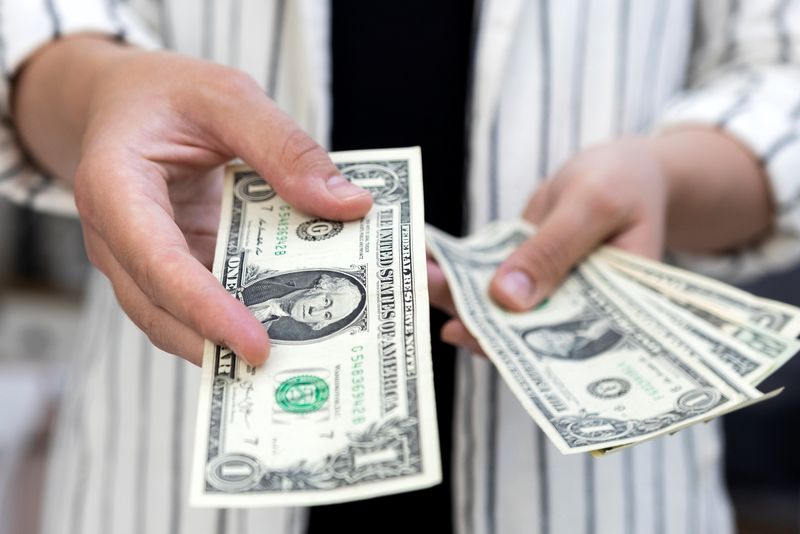
By Rae Wee
SINGAPORE (Reuters) -The U.S. dollar rose broadly on Thursday, reversing a brief tumble in the immediate aftermath of the Federal Reserve’s outsized interest rate cut that had been largely priced in by markets.
The U.S. central bank on Wednesday kicked off its monetary easing cycle with a larger-than-usual half-percentage-point reduction that Chair Jerome Powell said was meant to show policymakers’ commitment to sustaining a low unemployment rate now that inflation has eased.
While the size of the move had been anticipated by investors in part due to a slew of media reports pointing in that direction ahead of the decision, it defied the expectations of economists polled by Reuters, who were leaning toward a 25-basis-point cut.
Still, markets reacted in a typical “buy the rumour, sell the fact” fashion that kept the dollar on the front foot in Asian trade, as it recouped losses made against its peers in the run up to the Fed meeting.
Against the yen, the greenback gained as much as 1.2% to hit an intraday high of 143.95 earlier in the session. It last traded 0.62% higher at 143.15 yen.
“There was a sharp squeeze in short dollar/yen positions as markets took profit post-Fed,” said Christopher Wong, currency strategist at OCBC.
The Swiss franc fell about 0.3% to 0.8487 per dollar, while the euro dipped 0.01% to $1.1117, away from a three-week high hit in the previous session.
The dollar index, which measures the greenback against a basket of six peers, rose marginally to 101.03, having slid to an over one-year low of 100.21 in the previous session.
“Obviously, (there was) a lot of volatility on the announcement, but in terms of the pricing action and the information that came out … it’s not really that controversial in a sense,” said Rodrigo Catril, senior FX strategist at National Australia Bank (OTC:NABZY) (NAB).
“It’s sort of been pretty close to what the market has been pricing, particularly in terms of expectations of – arguably a little bit more than a 100 – but 100 bps of rate cuts this time around and another 100 next year, and also a terminal rate that is below 3% as well. So the big picture … is not materially different.”
Fed policymakers on Wednesday projected the benchmark interest rate would fall by another half of a percentage point by the end of this year, a full percentage point next year and half of a percentage point in 2026, though they said the outlook that far into the future is necessarily uncertain.
“Our view is that the dollar will depreciate next year. That is a cyclical story, not a structural story,” said Eric Robertsen, Standard Chartered (OTC:SCBFF)’s global head of research and chief strategist at a media roundtable in Singapore on Wednesday.
“We think the dollar is going to weaken because the Fed is easing interest rates and the global economy will experience a soft landing, which tends to be a benign scenario that tends to be negative for the dollar.”
Sterling fell 0.04% to $1.3208 after scaling a peak of $1.3298 in the previous session, its strongest level since March 2022.
That came in the wake of data on Wednesday which showed British inflation held steady in August but sped up in the services sector closely watched by the Bank of England, reinforcing bets that the central bank will keep interest rates on hold later in the day.
“When it comes to the Bank of England, clearly those inflation numbers yesterday show that they still have a concern or a problem with inflation, and in particular services inflation is still too high for comfort,” said NAB’s Catril.
“So to expect an easing today because of what the Fed has done seems a little bit too hard to believe.”
Elsewhere, the Australian and New Zealand dollars drew support from domestic data surprises.
An upbeat jobs report showed Australian employment blew past forecasts for a third straight month in August while the jobless rate held steady, reinforcing the view that the labour market remains tight.

That helped lift the Aussie 0.44% to $0.6794.
The kiwi meanwhile traded 0.07% higher at $0.6212, after data showed the New Zealand economy contracted by 0.2% in the second quarter, a bit better than the 0.4% fall expected.
This post is originally published on INVESTING.



